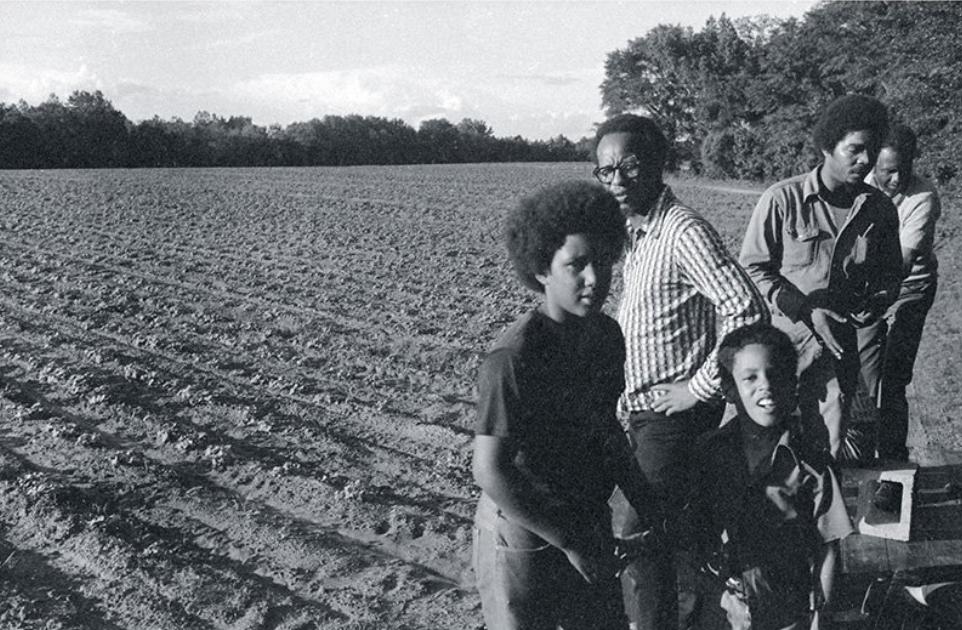Every once in a while, you come across a passage in history that reminds you that the innovations of the present are evolved forms of existing ideas and institutions; all steps forward are, in one way or another, based on a common inheritance. A recent read-through of John Emmeus Davies’ essay “Origins and Evolution of Land Trusts in the United States” was, for me, one of these reminders.
While the Agrarian Commons is unique in many ways, namely for its emphasis on agricultural land and ecological stewardship, it draws inspiration from the decades-long tradition of community land trusts (CLTs).
Land should be held and managed for the benefit of local communities.
A CLT, according to Center for Community Land Trust Innovation, “is a nonprofit corporation that holds land on behalf of a place-based community, while serving as the long-term steward for affordable housing, community gardens, civic buildings, commercial spaces and other community assets on behalf of a community.” Like the Agrarian Commons, CLTs are based on the premise that land should be held and managed for the benefit of local communities.
In the United States, the idea of creating a nonprofit entity to acquire and manage land for the benefit of a community (a core component of the Agrarian Commons) can be traced to the 1960s, when Black civil rights activists successfully acquired 3,000 acres of farmland and 2,000 acres of woodland. These activists, under the leadership of Charles Sherrod and Martin Luther King’s cousins, Slater King and C.B. King, founded a nonprofit, New Communities Inc., “to hold the land in perpetual trust for the permanent use of rural communities.” Securing land and placing it in control of a CLT was a means of ensuring that Black Americans could build wealth independently of land markets that actively discriminated against Black buyers and owners, while providing rural Black residents with an important base of power in the civil rights struggle.

The CLT, and, by extension, the Agrarian Commons, has roots in the global struggle for land, independence, and social justice.
Davies identifies New Communities land trust as the first CLT while reminding us that it “did not sprout newly green and fully formed from the red clay of southwest Georgia without antecedent. It was a product of a fertile seedbed of theoretical ideas, practical experiments, and social movements built up over the span of a hundred years.” The CLT, and, by extension, the Agrarian Commons, has roots in the global struggle for land, independence, and social justice.
One of the primary inspirations for New Communities Inc. was the work of Vinoba Bhave, the Indian philosopher and founder of the Bhoodan (Land Gift) Movement.
In India, land ownership had been concentrated in the hands of a small number of landowners who collaborated with the British colonizers to collect taxes and enforce British ordinances. In the 1950s, Bhave initiated the Bhoodan Movement, an effort to redistribute land by appealing to the moral conscience of landowners to donate their land directly to the poor. Bhoodan Acts were passed which prevented the gifted land from being resold, and required its active use for subsistence farming activity. When Bhave noticed that many poor farmers lacked the resources to effectively put donated land into use, Bhave created the Village Gift, or Gramdam model, in which an entire village would be gifted and held in trust for the villagers. According to Davies, the Gramdam was one of the primary inspirations for New Communities Inc.
Community-based land ownership initially emerged as a powerful tool of social justice.
Davis also cites the influence of Salvador Allende’s land reforms in Chile, which redistributed 59 percent of the country’s land, and the Kibbutz, an intentional community in Israel based on agriculture.
It is humbling to realize that the Agrarian Commons model was made possible by the visionary work of civil rights activists in the southern United States, landless farmers in India, and socialist policy makers in Chile. While conservation is an important part of Agrarian Trust’s work, it is important to remember that community-based land ownership initially emerged as a powerful tool of social justice. Agrarian Trust continues in this tradition by prioritizing the work of Black and Indigenous farmers to reclaim land and use it for the benefit of their communities; today, 83 percent of Agrarian Commons board members are Black, Indigenous, people of color, and women.


